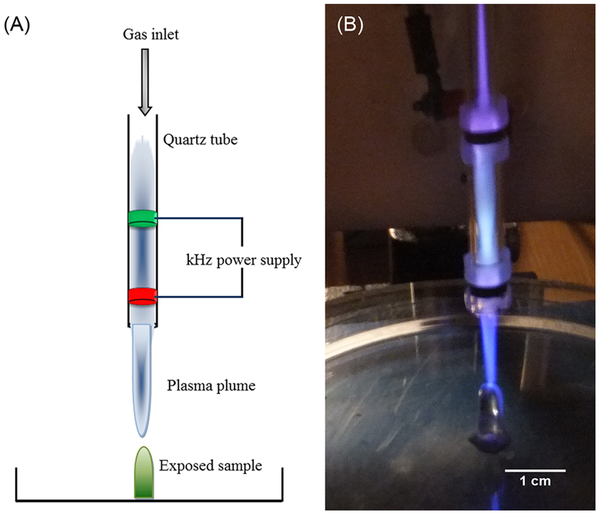The plasma is able to rapidly penetrate dense bacterial structures known as biofilms that bind bacteria together and make them resistant to conventional chemical approaches.
According to a statement, it could potentially kill off hospital superbugs like C. difficile and MRSA.
Prof Bill Graham, from the Centre for Plasma Physics at Queen’s University Belfast, said: ‘When bacteria congregate on surfaces, they produce a kind of glue that joins them together in complex communities, known as biofilms. This often makes it impossible for antibiotics to penetrate through and kill the bacteria deep within this protective layer.
Bacteria growing like this, as is often seen with superbugs in hospitals, are often more than 1,000 times more tolerant to antimicrobial agents such as antibiotics and disinfectants compared with free-floating bacteria.’

The team designed a bespoke radio-frequency plasma needle that delivers high-frequency ‘plasma bullets’ of helium and oxygen at atmospheric pressure at around 39°C.
When they tested the plasma jet against Pseudomonas aeruginosa biofilms, they noted a greater than 4-log (99.99 per cent) reduction in the number of viable cells, which was achieved within four minutes of exposure to the plasma jet when operated at 20kHz. Increasing the operation frequency to 40kHz resulted in a complete eradication of the bacterial biofilm at four minutes.
Dr Brendan Gilmore, from the School of Pharmacy at Queen’s, who collaborated in the study, said: ‘In the present study, we have looked at Pseudomonas aeruginosa, which causes a number of serious infections in patients with chronic lung disease such as cystic fibrosis, wounds and hospital-acquired infections.’
‘This approach has the potential to control hospital superbugs. These “cold” plasmas could be used widely in hospitals, surgeries and in the community as handheld devices for rapid decontamination of surfaces, including the skin, or be incorporated into bigger devices for decontamination of larger areas.’




JLR teams with Allye Energy on portable battery storage
This illustrates the lengths required to operate electric vehicles in some circumstances. It is just as well few electric Range Rovers will go off...